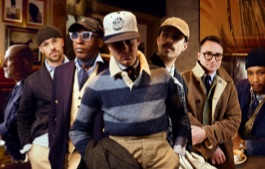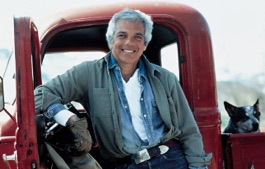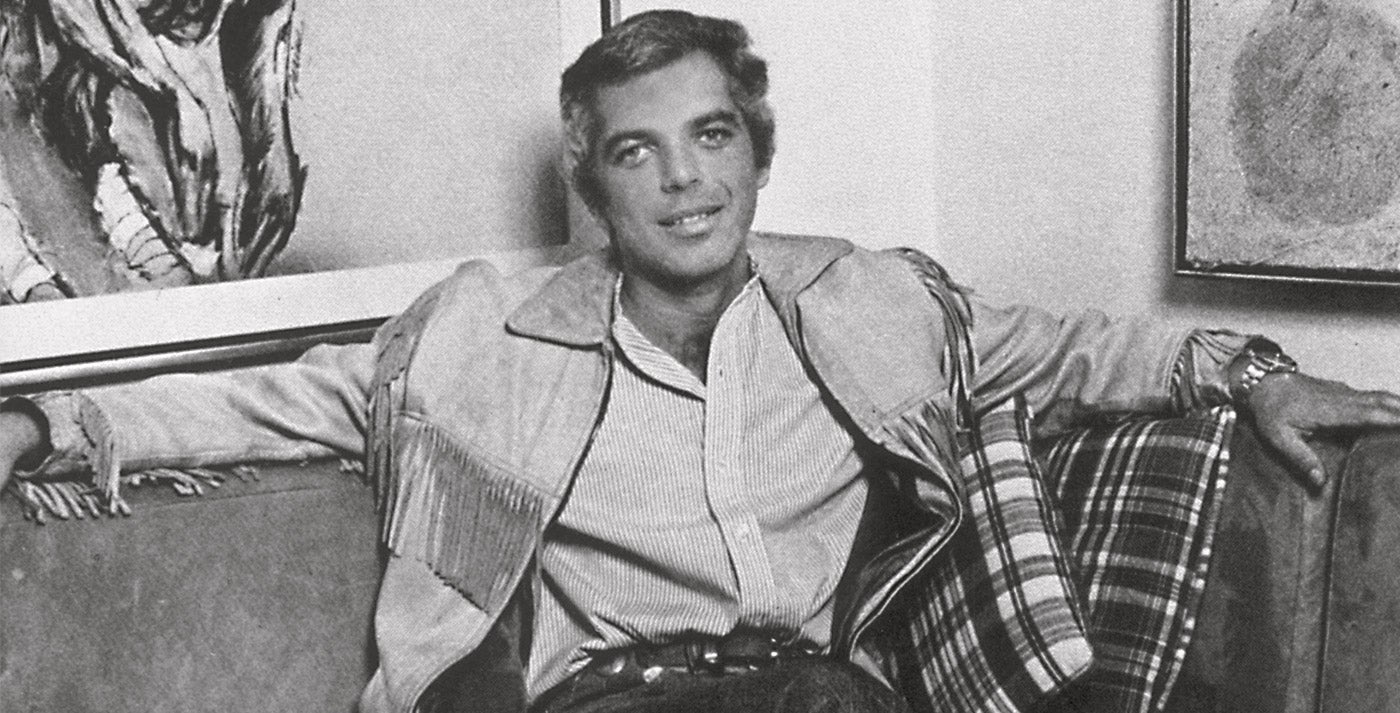
Style
Ralph on the Rise
An exclusive look at Ralph Lauren’s earliest press coverage, from WWD’s landmark new bookWhen the Daily News Record published its first mention of a stylish young tie salesman whose own clothes always seemed to be a season ahead of the market, they probably had no idea he’d still be blazing trails more than half a century later. It was 1964—a few years before the launch of the Polo brand⎯but the fashion world was already beginning to take notice of Ralph Lauren.
A new book from DNR’s sister publication, WWD: Fifty Years of Ralph Lauren traces the journey of Ralph Lauren from trendsetting tie salesman to America’s most iconic and influential designer. Integral moments in the brand’s history, like the launch of the first Polo fragrance, the debut of the Double RL and Lauren Ralph Lauren brands, and the opening of the Rhinelander Mansion flagship, are documented, along with personal milestones for Mr. Lauren including four CFDA awards and the launch of the philanthropic Pink Pony initiative. (Not to mention a plug from self-described “confirmed Polo fan” Frank Sinatra.) As every great story needs a great beginning, we look at the early years of the brand through the lens of its first coverage in WWD, below.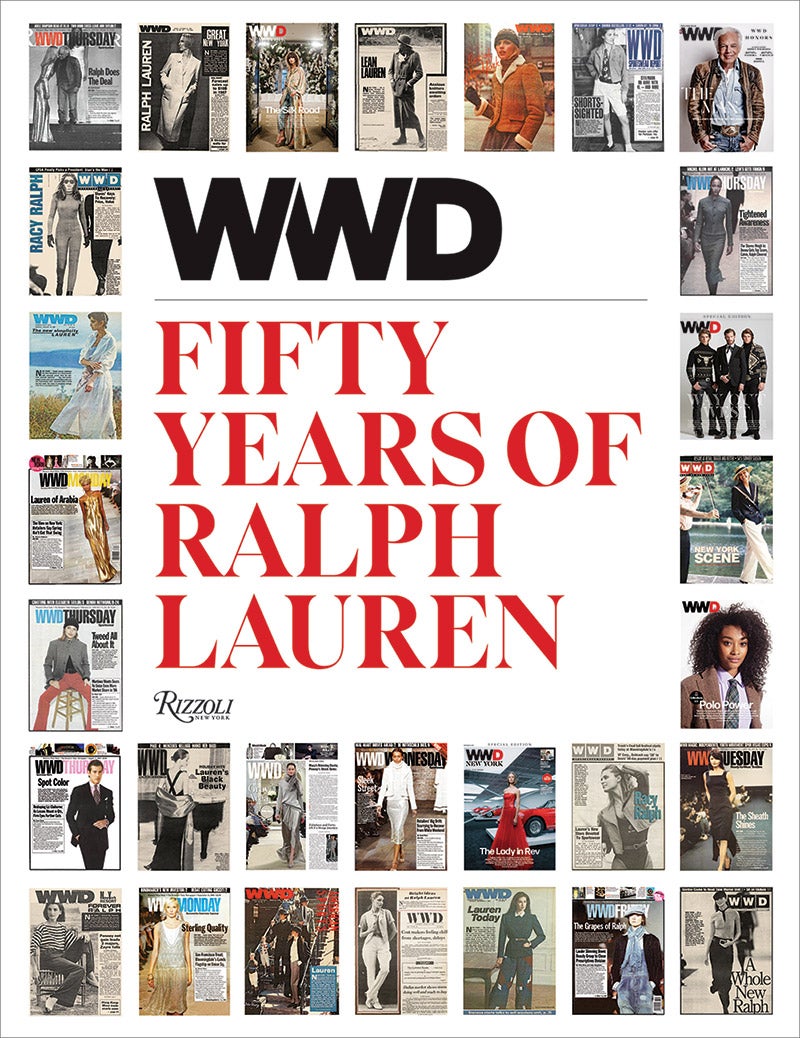
WWD: Fifty Years of Ralph Lauren is available now.
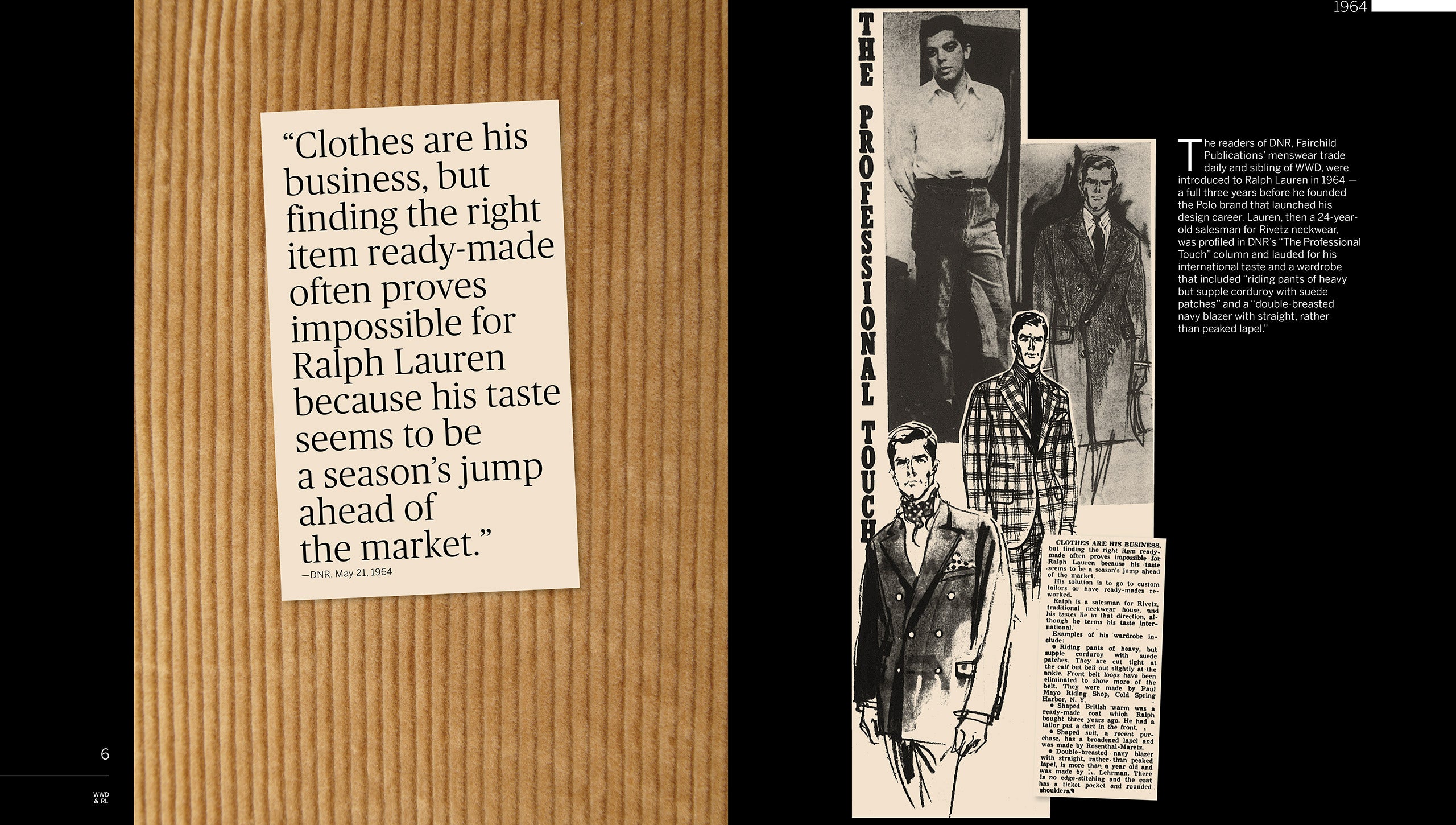
1964: Menswear daily DNR profiles a young tie salesman with the neckwear manufacturer Rivetz in their column “The Professional Touch.” The article states that the 24-year-old named Ralph Lauren is becoming known for his bold sartorial choices, including “riding pants of heavy but supple corduroy with suede patches” and a “double-breasted navy blazer with straight, rather than peaked lapel.” It further notes the difficulty young Mr. Lauren has in finding ready-made clothes because “his taste seems to be a season’s jump ahead of the market.”
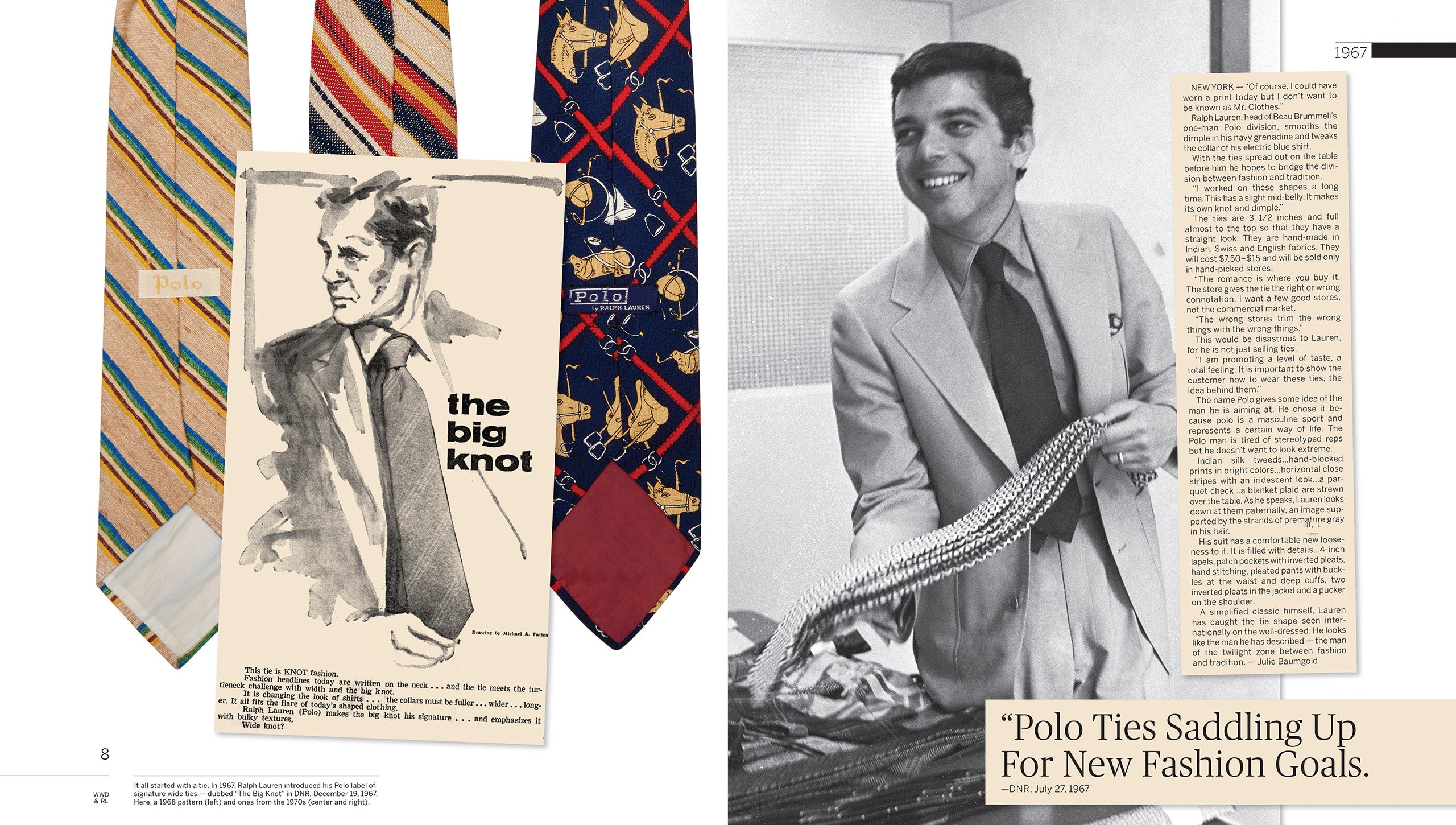
1967: Polo by Ralph Lauren is born, first as a selection of wide neckties, handmade in fine Indian, Swiss, and English fabrics. “I worked on these shapes a long time,” Mr. Lauren tells DNR. “This has a slight mid-belly. It makes its own knot and dimple.” Though Polo is still a one-man division of the Beau Brummell company, Mr. Lauren’s vision for his label’s potential is already crystal clear. “I am promoting a level of taste,” he says, “a total feeling.”
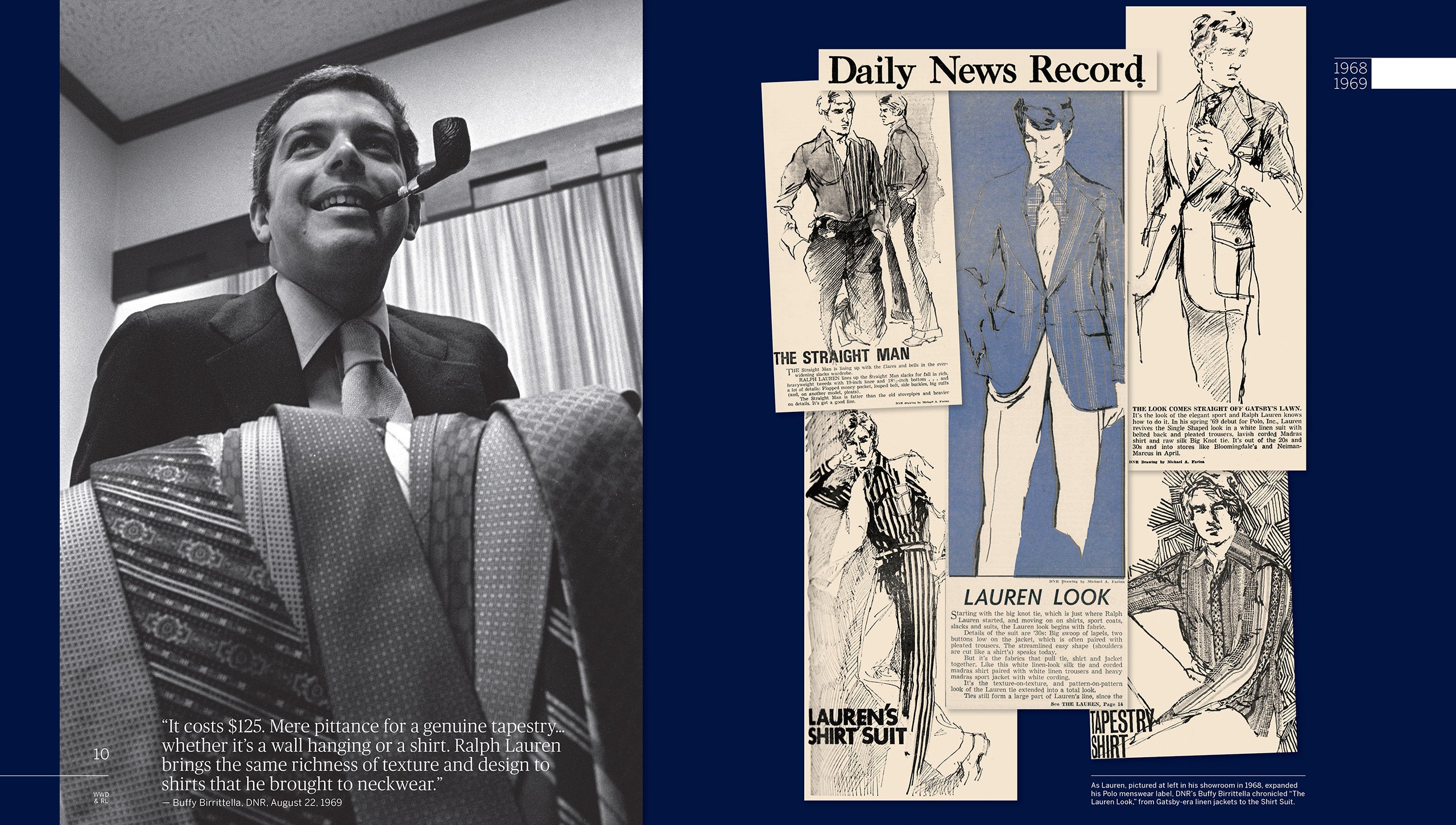
1968–1969: Ralph Lauren strikes out on his own, with Polo, Inc. The stylish elegance of his tie collection expands into a full line of shirts, sport coats, slacks, and suits. While the rest of the country is in the throes of hippiedom, Mr. Lauren’s sophisticated vision of all-American fashion is making inroads in New York, and people are taking notice. A particularly keen eye that notices belongs to a young DNR editor named Buffy Birrittella, who helps codify the “Lauren Look” for her readers, calling Mr. Lauren’s white linen belted-back suit “a look straight off Gatsby’s lawn.”
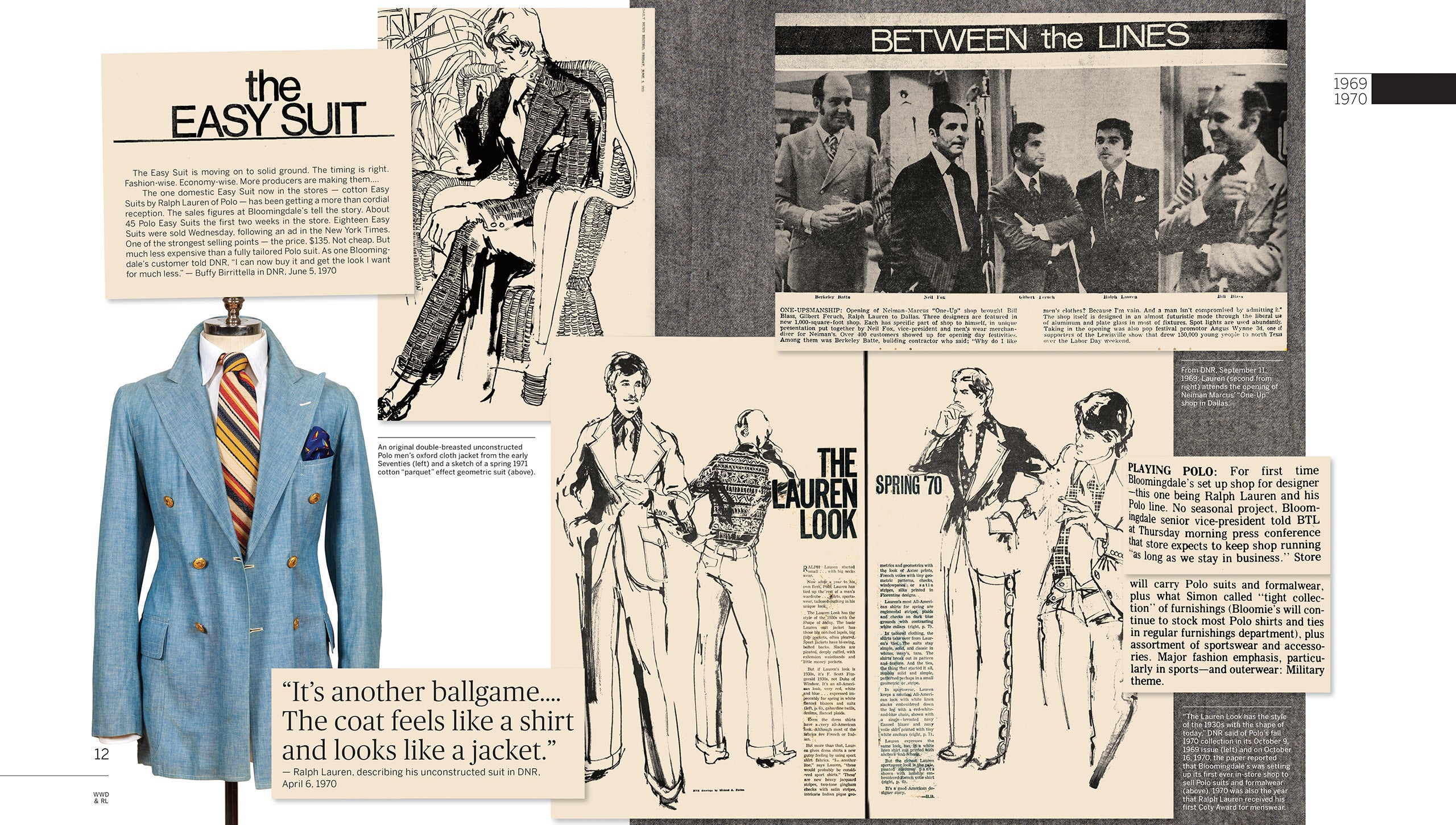
1970: “The Lauren Look” is becoming synonymous with the well-dressed American man. Mr. Lauren makes a splash with his oxford-cloth “Easy Suit,” selling 45 of them during the first two weeks of their debut at Bloomingdale’s. The legendary retailer sets up a designated Ralph Lauren shop within their store—the first of its kind for any designer. The Polo line expands to include sportswear and accessories. Later that year, Mr. Lauren wins his first Coty Award for menswear.
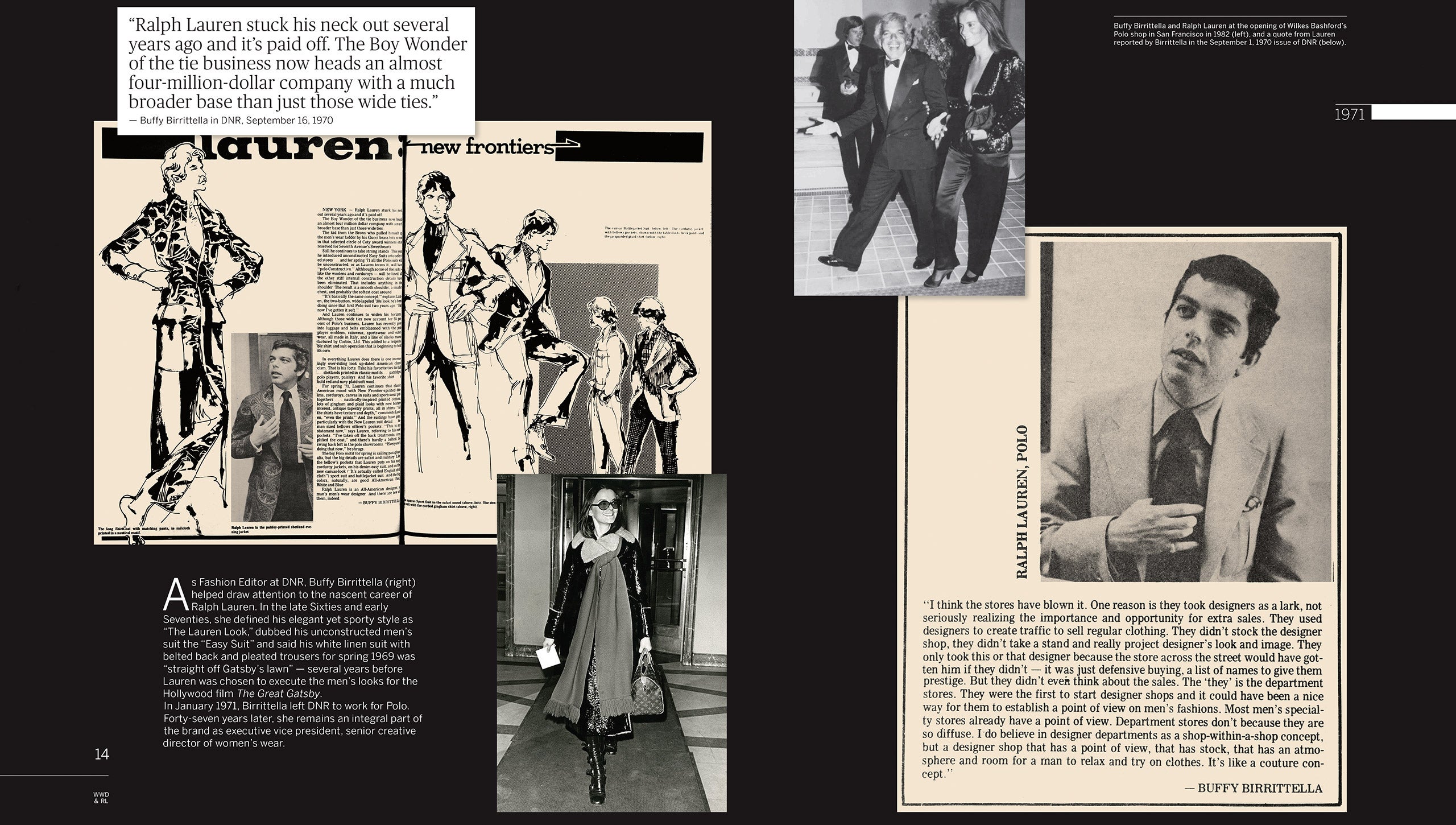
1971: Polo has grown to a $4 million company. More stores begin offering Polo “shops-within-a-shop,” but Mr. Lauren envisions something grander: “a designer shop that has … atmosphere and room for a man to relax and try on clothes … like a couture concept.” Having helped draw attention to Mr. Lauren’s early career, DNR fashion editor Buffy Birrittella leaves the paper to work for Polo full-time. She remains an integral part of the brand 47 years later, as executive vice president and senior creative director of womenswear.
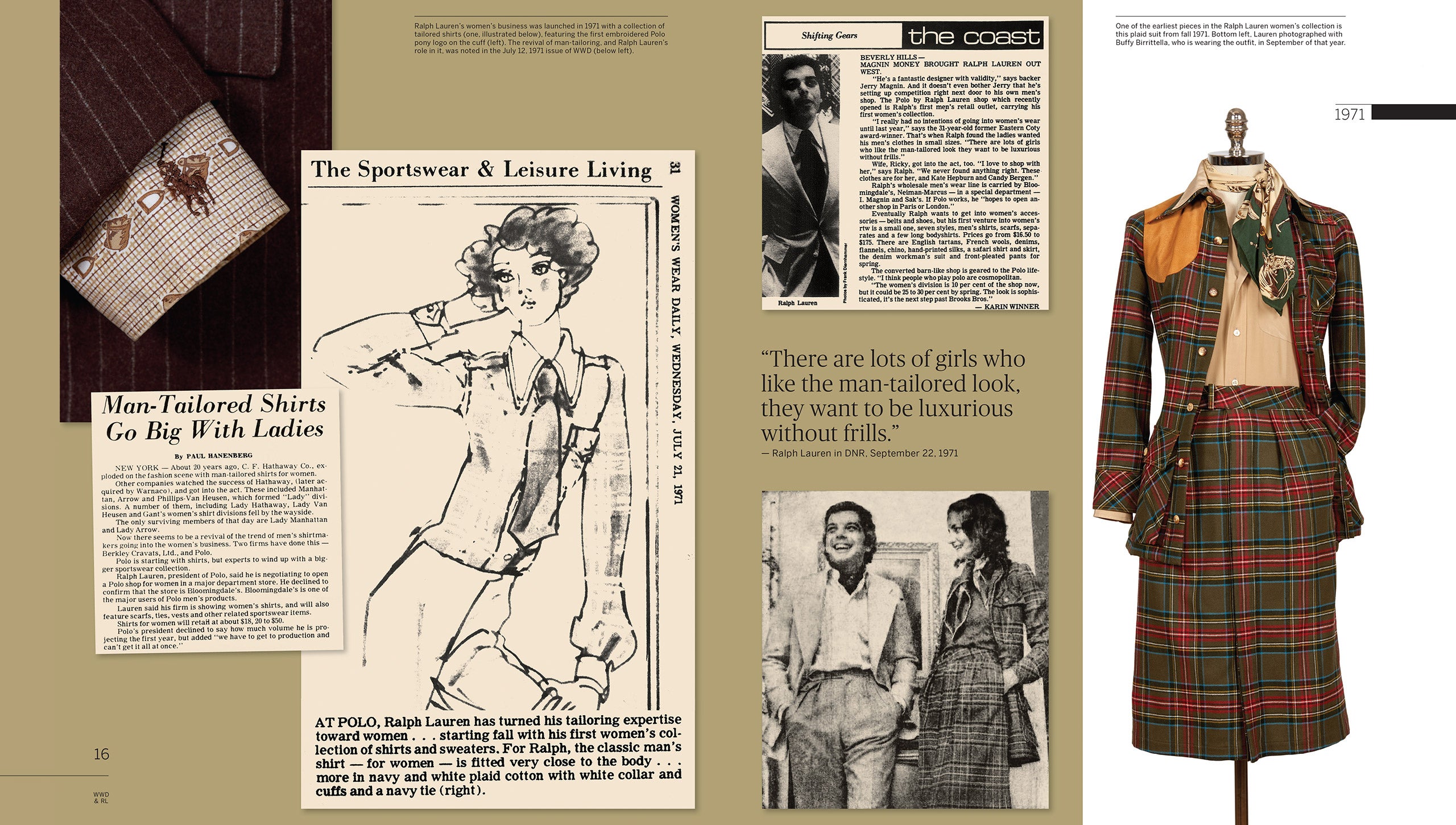
1971: With Birrittella on board, Mr. Lauren launches with first line of womenswear in the fall. Taking cues from men’s tailoring, the closely fitted button-down shirts, tartan skirt suits, and sweaters bring the Ralph Lauren look to a whole new client base. “They want to be luxurious without frills,” Mr. Lauren says of women who gravitate toward his menswear-inspired aesthetic. Meanwhile, Mr. Lauren’s vision for a retail concept comes to fruition with the opening of the first stand-alone Polo by Ralph Lauren shop on Beverly Hills’s storied Rodeo Drive.
- Photograph courtesy Ralph Lauren Corporation
- Photographs courtesy of Rizzoli






